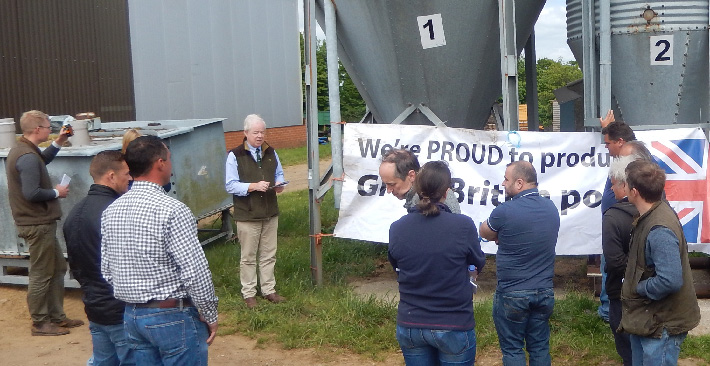Despite a slight shortage of contract pigs and a firmer SPP, which now stands at 131.9p, spot buyers were relatively quiet with most bids remaining at similar levels, although earlier in the week it was possible to extract a penny or two more in places.
The recent slightly unsettled weather is doing nothing to help, and nor is the value of the euro, but more of this later.
As a result, spot bacon was mainly traded in the 132p to 135p/kg range, and demand was generally referred to as “steady”.
Good news, however, that the Pulled Pork campaign reported by the NPA has stimulated much better demand for shoulder meat with year on year sales of shoulders up by 37% and, hopefully, the benefits of this will continue to filter through.
Weekly announced contract prices have remained largely unaltered, although Woodheads put on a penny to 130p/kg.
Producers are, however, urged to be like jockeys and “keep on top of their pigs”, because there are forecasts of larger pig numbers in the weeks ahead, which may well coincide with the “Wimbledon & Strawberries” period, which often signals more difficult trading conditions, unless barbeque demand can be fired up.
The weak euro, due to ongoing worries about the financial crisis in Greece, has done nothing to help, trading on Friday worth 71.34p, down from 72.35p a week ago and a massive slide in its value from this time last year when the euro was worth 79.87p.This represents a 10% drop in value during the 12-month period; effectively meaning that foreign pigmeat imports are 10% cheaper in currency terms and UK exports are worth 10% less.
This trend was reflected in the cull sow market which, having gone up 2p/kg a week ago, dropped back by the same amount, and as a result, cull sows were generally traded in the 56p to 58p/kg range, according to load size, making the gap between cull sow returns and maiden gilt values even wider to the extent that, in some cases, it takes almost 3 cull sows to buy 1 replacement gilt, which is another reason why some producers are disinclined to re-populate old and underperforming herds.
Weaner prices also remain at lacklustre levels with the latest AHDB 30kg ex farm weaner average quoted at £44.52/head, but the 7kg figure of £32.60/head hitting a new low since this was introduced two years ago.
Once again, a more buoyant finished pig market would work wonders in restoring buyers’ confidence but, based on current figures, both the producer and finisher are trading at breakeven or negative levels.
Cereal markets have ended another variable week, with ex-farm feed wheat quoted at £112.10/t. Futures markets have reflected this trend with July wheat quoted on the LIFFE market at £111.50/t and November at £121.50/t.
And finally, something else to worry about in the shape of further reports of more outbreaks of African swine fever in Latvia to be added to another five new outbreaks in Estonia earlier in the week.
Despite having the benefit of being an island, many other “foreign” diseases have managed to reach these shores over the years including, in the past, Dutch elm disease, blue tongue disease, avian flu, blue ear, classical swine fever and foot and mouth, to name but a few, not to forget German measles!
With the EU threatening to reduce levels of compensation to farmers whose livestock is affected by exotic disease outbreaks, this is yet one more reason why we should do all we possibly can to maintain the health of the UK pig herd by improving biosecurity facilities at ports of entry and abattoirs throughout the country to prevent onward transmission of any more nasty bugs.




